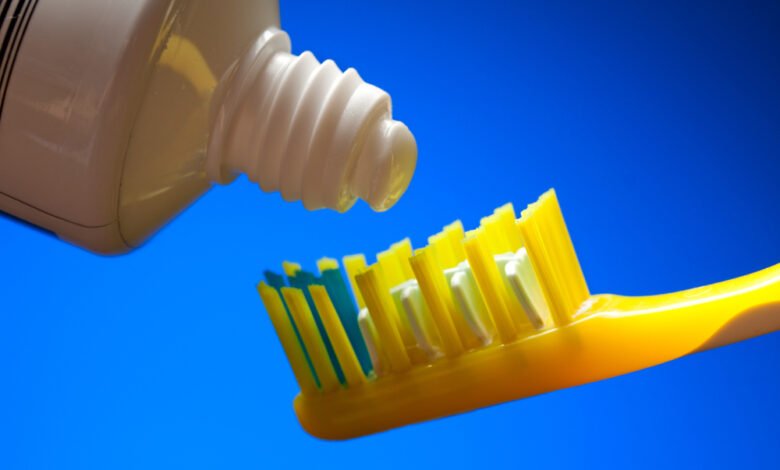How clean is your toothbrush?

Regular toothbrushing is important to remove plaque from the teeth and soft tissues. An effective toothbrushing technique using a manual or powered toothbrush and a fluoride toothpaste is necessary to maintain good oral hygiene and for the prevention of caries and periodontal disease. The mouth contains a significant number of microorganisms (bacteria, viruses and fungi) which contaminate the toothbrush after initial use and increase with repeated use.
The aim of this review was to assess the level of toothbrush contamination and the factors affecting contamination in the general population.
Methods
A protocol was registered with the PROPERO database. Searches were conducted in the Cochrane library, Cinahl Plus, Medline/PubMed, and Dentistry and Oral Health Sciences Source databases. Peer-reviewed studies reporting on toothbrush contamination published in English between 2012 and 2022 were considered. Two reviewers independently selected studies and assessed study quality using the Cochrane risk of bias tool for randomised controlled trials (RCTs) and the Joanna Briggs Institute’s (JBI) Critical Appraisal Checklist for analytical and descriptive cross-sectional research. The certainty of evidence was assessed using the Grading of Recommendations Assessment, Development, and Evaluation’ (GRADE) framework.
Results
- 15 studies (8 RCTs, 6 cross-sectional, 1 in-vitro) were included.
- The average duration of the studies was 3-4 weeks (range, 1 day – 7 months).
- 2 cross -sectional studies were considered to be at low risk of bias and 4 at moderate risk.
- 3 RCTs were assessed as being at low risk of bias, 4 at high risk and one at moderate risk.
- All 15 studies reported contamination of toothbrushes.
- 4 studies were analysed for effect of toothbrush bristles on bacterial contamination.
- 3 studies compared charcoal and non-charcoal brushes finding a significant reduction in colony forming units with charcoal brushed, MD= -07 (95%CI: -127.19 to -20.95).
- 1 study reported reduction of bacterial load with nano-gold coated bristles.
- 1 study reported a reduced bacterial load with green tea extract infused bristles.
- 3 RCTs reported reduced bacterial contamination following the use of chlorhexidine (CHX) mouthwash on toothbrush when compared to control.
- 1 RCT reported reduced bacterial contamination following use of CHX.
- The authors assessed the certainty of evidence as moderate.
Conclusions
The authors concluded: –
The toothbrush becomes contaminated even after its first usage, and the contamination level rises with continued use. There are a number of factors that lead to the contamination of brushes, such as increased humidity brought on by a plastic cover or a toilet setting. Charcoal brushes show significant efficacy as compared to regular bristles in reducing toothbrush contamination; however, more RCTs are needed to further assess its efficacy. Nevertheless, rinsing with chlorhexidine mouthwash after daily brushing shows favourable results.
Comments
This review was conducted to update to an earlier review published in 2012 (Dental Elf – 30th Mar 2012). A protocol for the review was listed on the PROSPERO database although interestingly it is based on a more narrowly focused question (‘Are toothbrushes with charcoal bristles effective in reducing microbial contamination of toothbrushes compared to brushes with non-charcoal bristles.’) than the published review.
The authors have searched several major databases and have identified 15 studies, however, restricting the inclusion to English language papers may have excluded relevant studies. Given the significant number of microorganisms that are present in the mouth it is of no great surprise that toothbrushes become contaminated after first usage and that the level of contamination rises with continued use. The findings suggest that the storage environment may affect levels of contamination with reduction when stored dry and increases in damp environment although the number of studies involved was small. While recognising that toothbrush contamination does occur and can be reduced by some actions there is little evidence of significant adverse events from current practices.
Links
Primary Paper
Khan SA, Syed FA, Khalid T, Farheen N, Javed F, Kazmi SMR. An updated systematic review on toothbrush contamination: An overlooked oral health concern among general population. Int J Dent Hyg. 2023 Sep 8. doi: 10.1111/idh.12740. Epub ahead of print. PMID: 37680184.
Other references
Dental Elf – 30th Mar 2012
Source link
#clean #toothbrush

